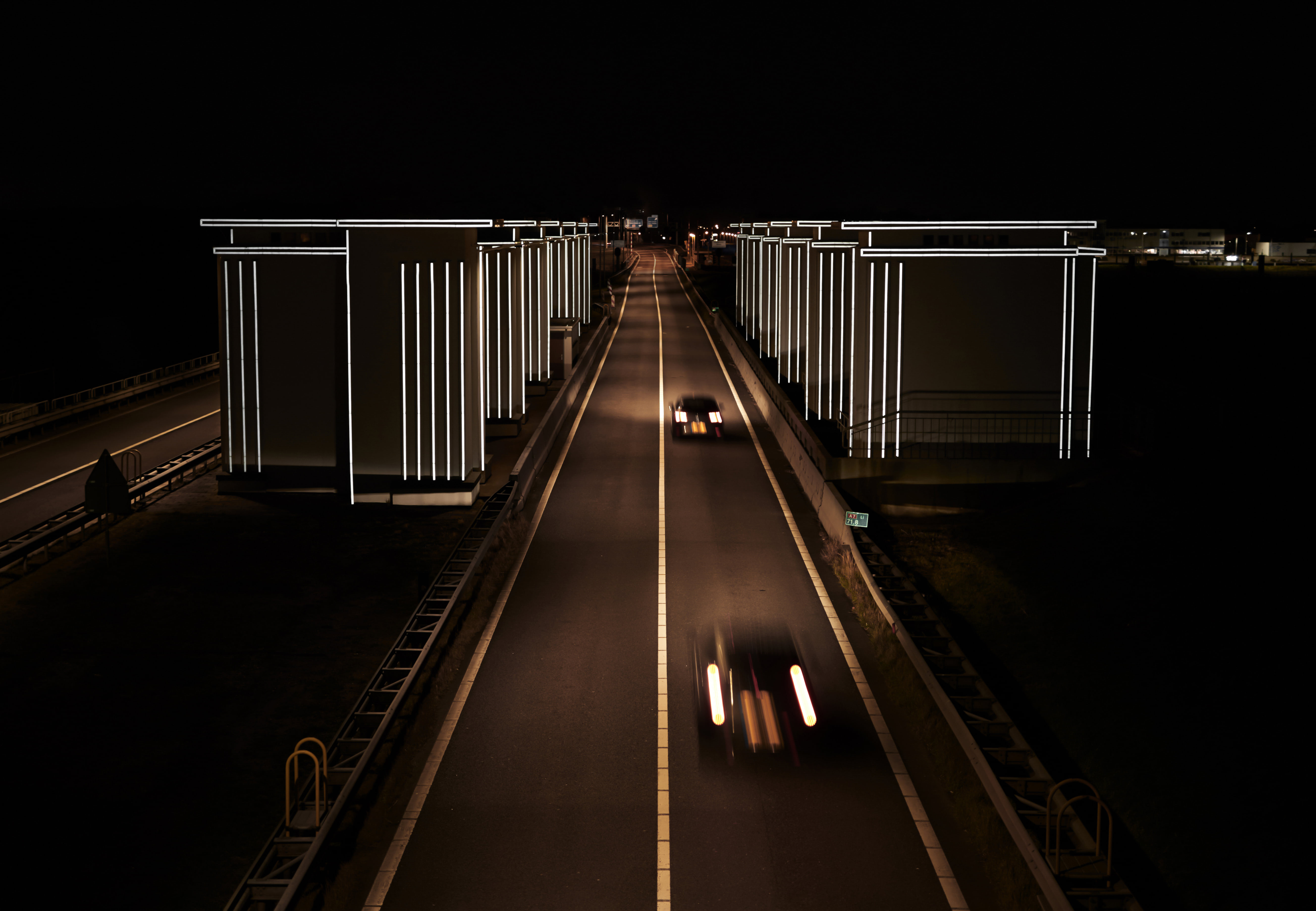The Afsluitdijk, a 32.5 km long protective dike that shorthened the coastline of The Netherlands drastically, is an eloquent example of manufactured landscape. It helped men to turn a sea into a lake, safer shorelines and a new province. When you’re around the coming weeks, you can explore the latest art project of NNN ambassador Daan Roosegaarde and discover the iconic, yet historical value of the Closing Dike. And yes, it’s worth a drive.
The closing dike was constructed in 1932 to decrease the flood risk of coastline of the surprisingly low-lying Netherlands. What used to be the salty Zuiderzee, is now the freshwater IJssellake behind the dike, as well as a man-made province of reclaimed land: Flevoland. This province is about five meters below sea level. After 85 years of intensive use of the dike as protection and as a central road, the dike is undergoing intensive renovations to sustain under the projected heightening of the water levels of the IJssel lake and the Wadden Sea.
The Closing Dike is not only a symbol of the long Dutch history of water protection, it may also be viewed as an iconic center of innovation, recreation and creativity. For instance, the dike is inspiring the implementation of blue energy: a method for generating energy from the chemical difference between the salt and fresh water. Moreover, it is home to recreational venues for the public, a visitor center and a new Wadden Center, to be opened in 2018, telling the story of the Wadden Sea and the Dutch Delta Design.
Studio Roosegaarde highlights the iconic Closing Dike with some art installations. Drive through the Gates of Light, see the green wind-energy generating kites in the Windvogel installation, and pop out of the car to experience the Glowing Nature installation in a historical bunker with live bioluminescent algae. The exhibit can be seen until the 21th of January.

Share your thoughts and join the technology debate!
Be the first to comment